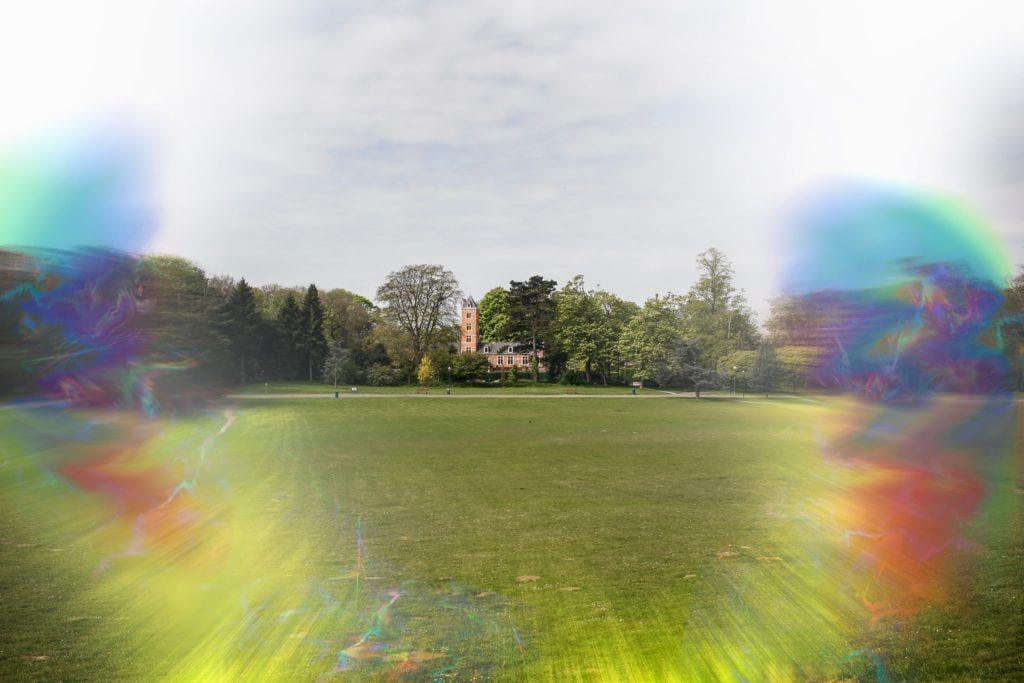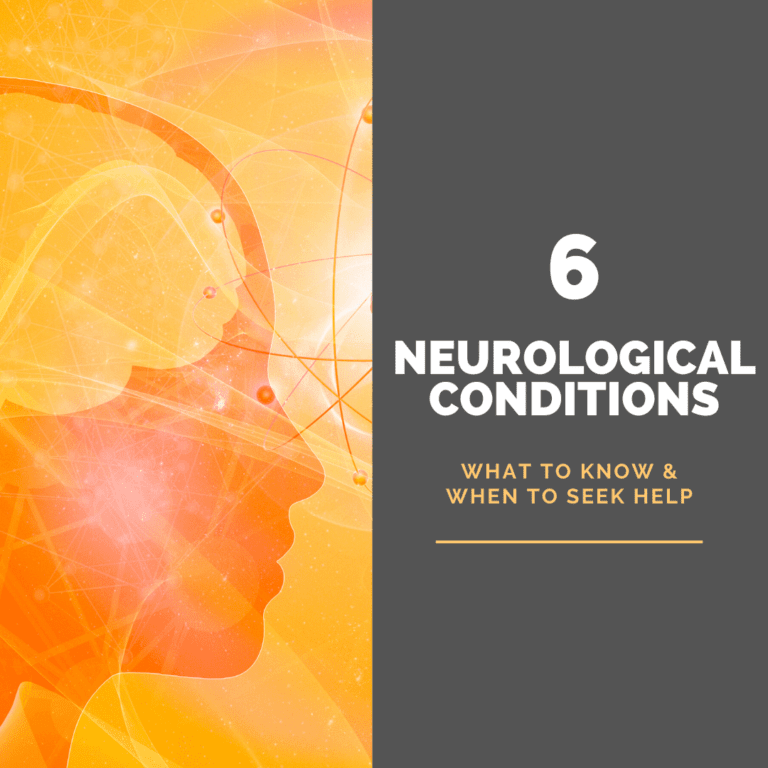A neurological condition is defined as any condition that affects the nervous system, which is composed of the brain, spinal cord, and nerves (as well as the muscles that they control). Neurological conditions can be difficult to diagnose, with many neurologists relying on a patient’s symptoms and medical history. It is estimated by the United Nations that as many as 1 in 6 of the world’s population is affected by a neurological disorder. As with other types of health conditions, early diagnose is recommended for better treatment outcomes. As such, this blog post discusses six of the most common neurological conditions and their early symptoms: headaches, seizures, stroke, ALS (amyotrophic lateral sclerosis), dementia (including Alzheimer’s disease), and Parkinson’s disease.
Headaches
Headaches are one of the most common neurological conditions. Just about everyone gets headaches from time to time, however some people are affected by chronic headache pain due to a headache disorder. Headache disorders can include:

- Migraines: A migraine is a neurologic condition that causes severe throbbing pain in one area of the head, usually on just one side. The pain can be so severe that it causes nausea and vomiting and may even lead to loss of consciousness or convulsions. Migraine attacks typically last from four to 72 hours. Migraines are often preceded by an “aura,” which includes visual disturbances such as flashing lights, zigzagging lines, blind spots in the field of vision (scotoma), or loss of vision (blindness) for up to 10 minutes before or after the headache begins. Other symptoms include: numbness; tingling sensation; extreme sensitivity to light (photophobia); extreme sensitivity to sound (phonophobia); and/or a feeling of warmth or coldness.
- Tension Headaches: A tension headache is a type of headache that involves tight muscles and tender points in the neck, shoulders, and back. The pain typically starts at the base of your head or on one side of your head and spreads to other areas. The pain ranges from mild to severe and can get worse with physical activity. Mild tension headaches often clear up by themselves within 12 hours or so. Severe ones may require medical treatment for relief. Tension headaches are more common among adults than children; they’re also more common in women than men (possibly because hormones play a role). You might be susceptible if you: sit or stand for long periods; work under stress; or experience anxiety about finances, school grades, relationships.
- Cluster Headaches: A cluster headache is a neurologic condition that causes severe, one-sided pain on the face or around the eye. The pain can be so severe that it leads to nausea and vomiting, may cause loss of consciousness, or convulsions. Cluster headaches are often preceded by an “aura,” which includes visual disturbances such as flashing lights, zigzagging lines, blind spots in the field of vision (scotoma), or loss of vision (blindness) for up to 10 minutes before or after the headache begins. Other symptoms include: numbness; tingling sensation; extreme sensitivity to light (photophobia); extreme sensitivity to sound (phonophobia); and/or a feeling of warmth or coldness.
Headache pain is often described as an intense pressure or throbbing sensation that may be located anywhere around your head or neck region. As mentioned above, however, the exact symptoms of a headache disorder can vary depending on the type of headache. Despite the fact that headache disorders are not deadly nor contagious, it is still recommended to seek treatment for chronic headache pain, especially if it has negatively affected your quality of life.
Seizures/Epilepsy
A seizure happens when your brain gets disrupted, either by an infection or injury. It’s like the electricity in your brain shorts out and causes sudden changes in how you act. A lot of people think seizures are rare, but they actually happen to about 1 in a 100 Americans every year, according to the Epilepsy Foundation. A seizure is a single occurrence of abnormal electrical activity and is considered to be a symptom, whereas epilepsy is a neurologic condition that causes recurrent seizure episodes.
There are different types of seizures and not all seizures look the same: some involve convulsions (which can be violent), while others might last only a few seconds without any shaking at all. Anytime a seizure is suspected, it is recommended to seek treatment from a neurologist to determine what type of seizure it was, what caused it, and what to do next.
Stroke
Stroke is another very common neurologic condition that occurs when blood flow to part of your brain stops for some period of time – usually due to a clot. If the blood flow is cut off for even a few seconds, it can result in neurologic damage or death of brain tissue. The symptoms of stroke are often described as sudden-onset weakness (e.g., on one side of your body), confusion, sensory loss (including vision loss and/or impaired sensation), headache pain, and/or difficulty speaking.
Due to the sudden onset of neurologic symptoms, it is recommended that you seek emergency medical care immediately if any neurologic deficits are present or if you even suspect someone may be having a stroke. When caught in the early stages, prompt medical attention may be able to reverse and/or minimize the effects of a stroke. You can also take preventative steps by evaluating your personal risk factors for a stroke to determine what level of risk you are at and if there is any way to reduce your risk.
ALS: Amyotrophic Lateral Sclerosis

Amyotrophic lateral sclerosis (ALS) is a neurologic condition that causes nerve cells, also called neurons, in the brain and spinal cord to stop working. This results in muscle weakness throughout the body caused by dying motor neurons – which are responsible for sending electrical signals from your brain to your muscles so they can move.
The most common neurologic symptoms of ALS are muscle weakness or twitches throughout the body. Other symptoms include: slurred speech, clumsiness, abnormal muscle fatigue, muscle tightness or stiffness, and problems with breathing or swallowing. Unfortunately, ALS is hard to diagnose, which frequently leads to a delayed diagnosis and treatment delays. With that being said, the sooner you are diagnosed and begin treatment, the better.
Dementia
Dementia is a neurologic condition that causes confusion and loss of memory, either due to aging or an underlying neurologic disease. A neurologist can diagnose dementia by reviewing your medical history, doing a neurological exam, and performing neuropsychological assessments.
There are many different types of dementia: Alzheimer’s Disease is the most common form, but there are also vascular dementias (caused by strokes), Lewy Body Dementia (caused by Parkinson’s disease), frontotemporal dementias (caused by brain tumors or trauma), Creutzfeldt-Jakob Disease (a rare type caused by prions) and more.
The symptoms of all dementias vary depending on the type of dementia you have, but neurologic symptoms are common among all types. These neurologic symptoms include: memory loss or impairment of short-term memory, difficulties planning and organizing things in your life (e.g., personal care), problems paying attention and concentrating on tasks for a period of time, difficulty following directions when given more than one step at a time and/or understanding social cues such as facial expressions and tone of voice.
Parkinson’s Disease
Parkinson’s disease is neurologic condition that causes nerve cells, also called neurons, in the brain and spinal cord to stop working. This results in muscle weakness throughout the body caused by dying motor neurons – which are responsible for sending electrical signals from your brain to your muscles so they can move.
The most common neurologic symptoms of Parkinson’s Disease are muscle weakness or twitches throughout the body. Other symptoms include: slurred speech, clumsiness, abnormal muscle fatigue, muscle tightness or stiffness, and problems with breathing or swallowing. Unfortunately, Parkinson’s Disease is hard to diagnose as it frequently leads to a delayed diagnosis and treatment delays. With that being said, the sooner you are diagnosed and begin treatment –the better!

Dr. Kashouty, a diplomate of the American Board of Psychiatry and Neurology (ABPN), practices general neurology with fellowship trained specialization in clinical neurophysiology. Dr. Kashouty finds the form and function of the nerves and muscles the most interesting part of neurology, which is what led him to specialize in neurophysiology with more emphasis on neuromuscular conditions. He treats all neurological diseases, but his main focus is to treat and manage headaches, movement disorders and neuromuscular diseases.




